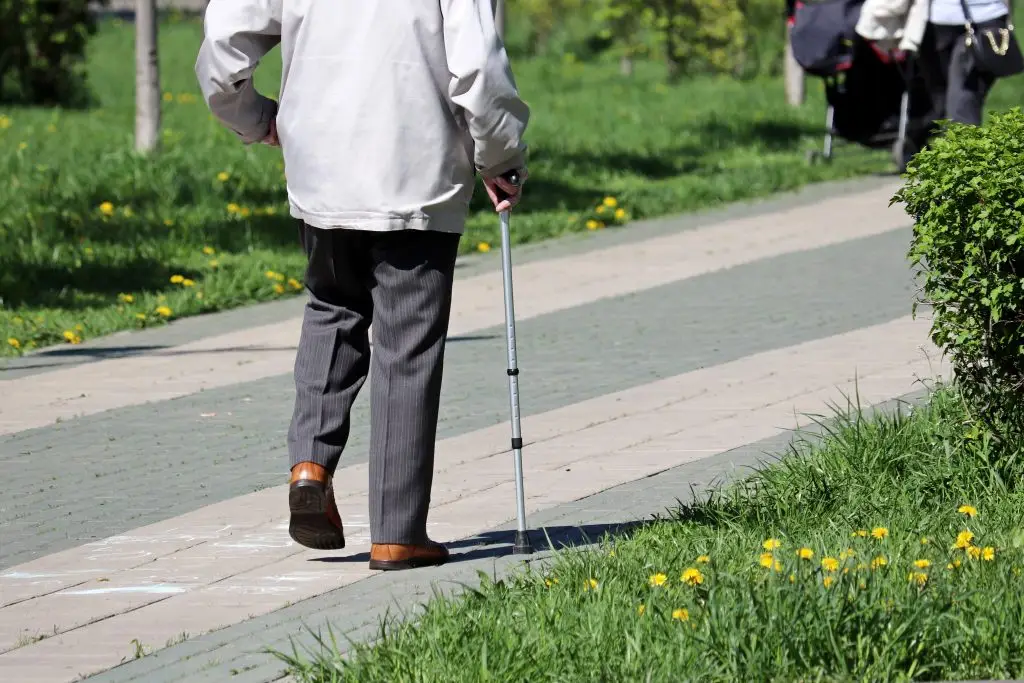Walking is so much a part of our daily lives that we rarely think twice about it. But what happens when something disrupts this seemingly simple act? A walking impairment can be a constant reminder of the freedom of movement we often take for granted. Whether it’s due to an injury, chronic pain, or another underlying condition, an abnormal gait can significantly impact one’s quality of life.
If you or a loved one are dealing with a gait abnormality, understanding the causes and available treatments is the first step toward regaining comfort and mobility.
Types of gait impairments
While every individual’s walking style is unique, there are well-recognized categories of gait abnormalities. Common words you might hear that indicate an abnormal gait include limp, unsteady, shuffle, or waddle. However, movement specialists and physical therapists may use other terms to be more specific to the cause of the walking impairment.
Here are a few common types of abnormal walking patterns, although there are many more that we won’t cover in detail here.
Antalgic gait
An antalgic gait is essentially the medical term for “limp.” It refers to any type of pain that makes you avoid putting pressure on one of your legs or feet. This walking abnormality can arise from a large variety of issues, from arthritis to vascular issues, ankle pain to hip pain, and many things in between.
Propulsive gait
Someone who walks quickly, stiffly, and seemingly “propelled” forward by hunching is said to have a propulsive gait. This commonly affects those who are diagnosed with Parkinson’s disease.
Spastic gait
Similar to a limp, spastic gait refers to walking with one leg unresponsive to bending, leaving it to swing around in a circle as the other leg moves more normally.
Scissors gait
If the knees and/or thighs physically hit each other as you walk, the legs are crossing over each other’s path in what is known as a scissors gait.
Shuffling gait
Often self-explanatory, those who have a shuffling gait do not pick their feet completely off the ground when walking. This can happen due to having off-balance sensations or as a result of injury that prevents lifting the foot completely.
Waddling gait
There are a few causes for waddling gait, which occurs when the upper body moves or swings dramatically from side to side during walking.
Treating abnormal gait
As you might imagine, how we provide treatment to patients with an abnormal gait depends entirely on their underlying cause. There are a very different set of treatments available for people who walk differently due to arthritis pain compared to Parkinson’s disease, for example.
In general, we can use one or several of the following types of therapy to help you or your loved one regain their normal mobility:
- Stretching and strengthening exercises: Targeted stretches and strength-building exercises can help reduce muscle tightness and build stability, especially around previously injured areas.
- Manual therapy: Hands-on techniques, such as joint mobilization, can enhance range of motion and reduce pain-related tension.
- Gait retraining: This involves re-educating your muscles and nerves to adopt a healthier walking pattern. Advanced physical therapies may include treadmill training with visual or physical feedback to refine your movements.
- Assistive devices: For some in the recovery process, temporary aids like braces or walkers may prove beneficial.
- Neuromuscular re-education: If nerves are impaired, therapies aimed at retraining the connection between your brain, nerves, and muscles may help improve coordination.
Our approach combines these therapies when necessary to ensure you or your loved one receives a comprehensive treatment plan for realistic but long-lasting results.
Gait analysis and treatment throughout Maine
At Back in Motion Physical Therapy, we’re proud to help individuals across Maine regain their mobility and confidence. Whether you or a loved one are dealing with an injury or chronic condition that affects one of the most basic parts of your independent life, our experienced physical therapists are here to help.
Get started with a treatment plan that’s personalized for your needs by calling one of our clinics throughout the state or by requesting an appointment online today.

